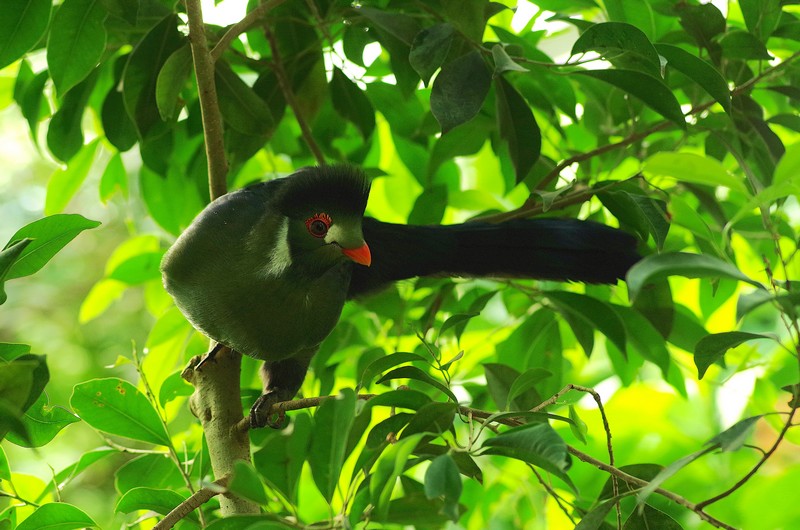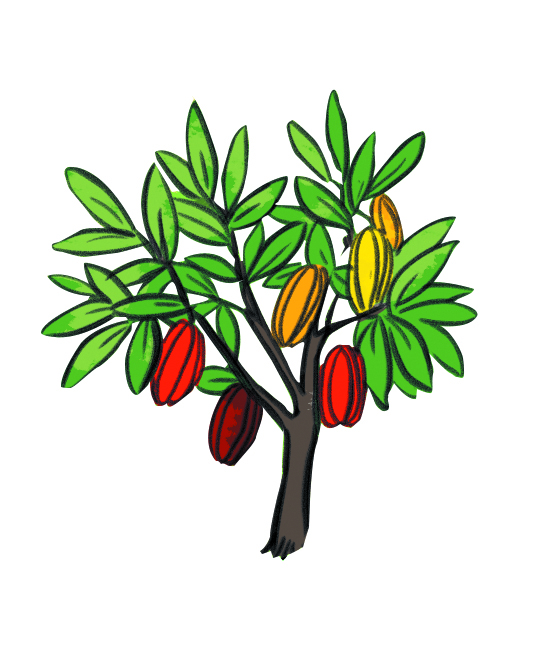On the occasion of our tropical butterfly house in Honfleur celebrating its anniversary, let us zoom in on our white-cheeked Turacos, the Monarch butterfly and the cacao tree.
In 2019, the Naturospace is celebrating its 20
th anniversary since first opening to the public. Already!… 20 years of tropical passion with more than ever the same motivation, the same goal: sharing this raw emotion that one experiences when immersed in this nature that is so special. Connecting our guests live with our plants, butterflies and birds without any cages or barriers hindering them.
While the garden is getting more beautiful with age, the trees are becoming outstanding, the botanical collection is enriched, and our number of birds increases year after year. Let us zoom in on the white-cheeked Turacos, the Monarch butterfly and the cacao tree you can admire when touring the site in Honfleur.
Exotic bird: the white-cheeked Turaco
This summer, we are introducing you to the white-cheeked Turaco. Turacos live in the mountains of Ethiopia. These birds are gregarious and arboreal, they only ever descend to the ground to bathe and to drink. They are frugivorous, meaning they are fruit-eaters. Being monogamous, Turacos are very territorial and remain in family groups over long periods of time. These exotic birds are quite fragile and any damage done to their habitat could cause their numbers to decline quite promptly.
Tropical butterfly: the Monarch
The Monarch is a migratory species. This tropical butterfly enjoys living all over America, and spends most of the winter months in Mexico. It finds in our tropical glasshouse in Honfleur ideal conditions to develop. Its bright colours are meant to be a warning signal for potential predators. A Monarch’s lifespan can reach 6 months when entering diapause. The Monarch is one of the very few butterflies to benefit from a protection programme (protection of habitats and wintering grounds in Canada, the USA and Mexico).

Rare plant: the cacao tree
Present in our butterfly glasshouse since the very beginning, the cacao tree produces cocoa pods from which the beans used to make chocolate are extracted. Inflorescences appear on its trunk. Its flowers are hermaphroditic, meaning they feature both male (stamens) and female organs (pistil). The pod is green and then turns orange when it is ready to be harvested. The beans are plump and provide cocoa that is fine and fragrant, highly valued by chocolate makers. Growing cocoa requires a hot and humid climate, regular rainfall and a lot of shade.


